Best Sony lenses Black Friday 2025: Make the most of your Sony camera
The best Sony lenses are the best glass you can get for your Sony camera. The perfect festive gift for a Sony camera owner.
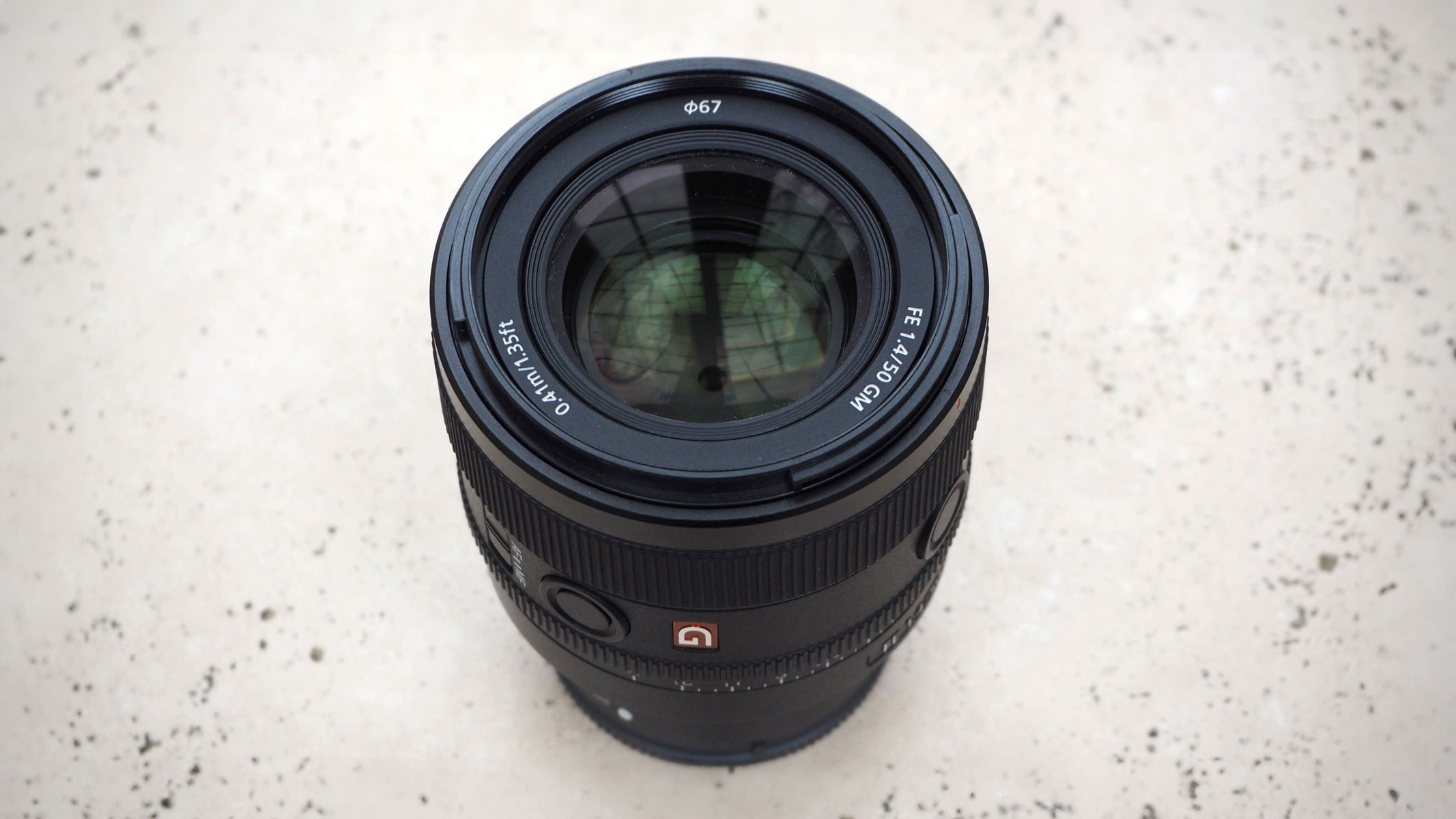
Sony cameras are renowned for their quality, but if you're not using the right lens, you may not be getting the most out of your Sony camera. That's why we have put together an expert guide to the best Sony lenses.
Our guide covers both prime and zoom lenses and it's important to understand the difference. The former have a fixed focal length, meaning you have to physically get closer to your subject. Typically, you'll get better optical quality from prime lenses but the trade-off is the lack of zoom.
Another factor to bear in mind is just how much bulk you want to add to your kit. We have detailed the weight of each lens, but the heavier your equipment is, the more likely it is that you'll need one of the best tripods. So read on, and let us help you choose the right Sony lens. Or if you want to look at the best camera models out now, we have a guide to the best cameras.
The quick list
Below you'll find out our picks of the best Sony lenses, alongside a brief explanation of how and why they stand out. Click 'read more below' for a more in-depth look at each lens.
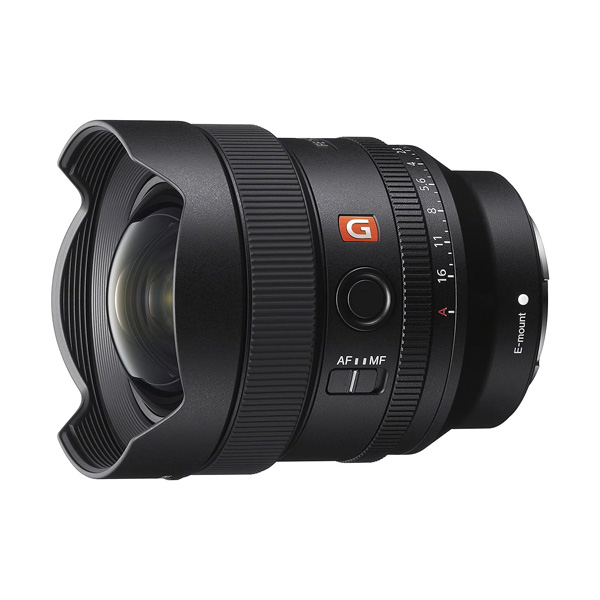
Best FE wide-angle prime lens
This ultra-wide, fast prime excels in low-light conditions and is a great astrophotography lens.
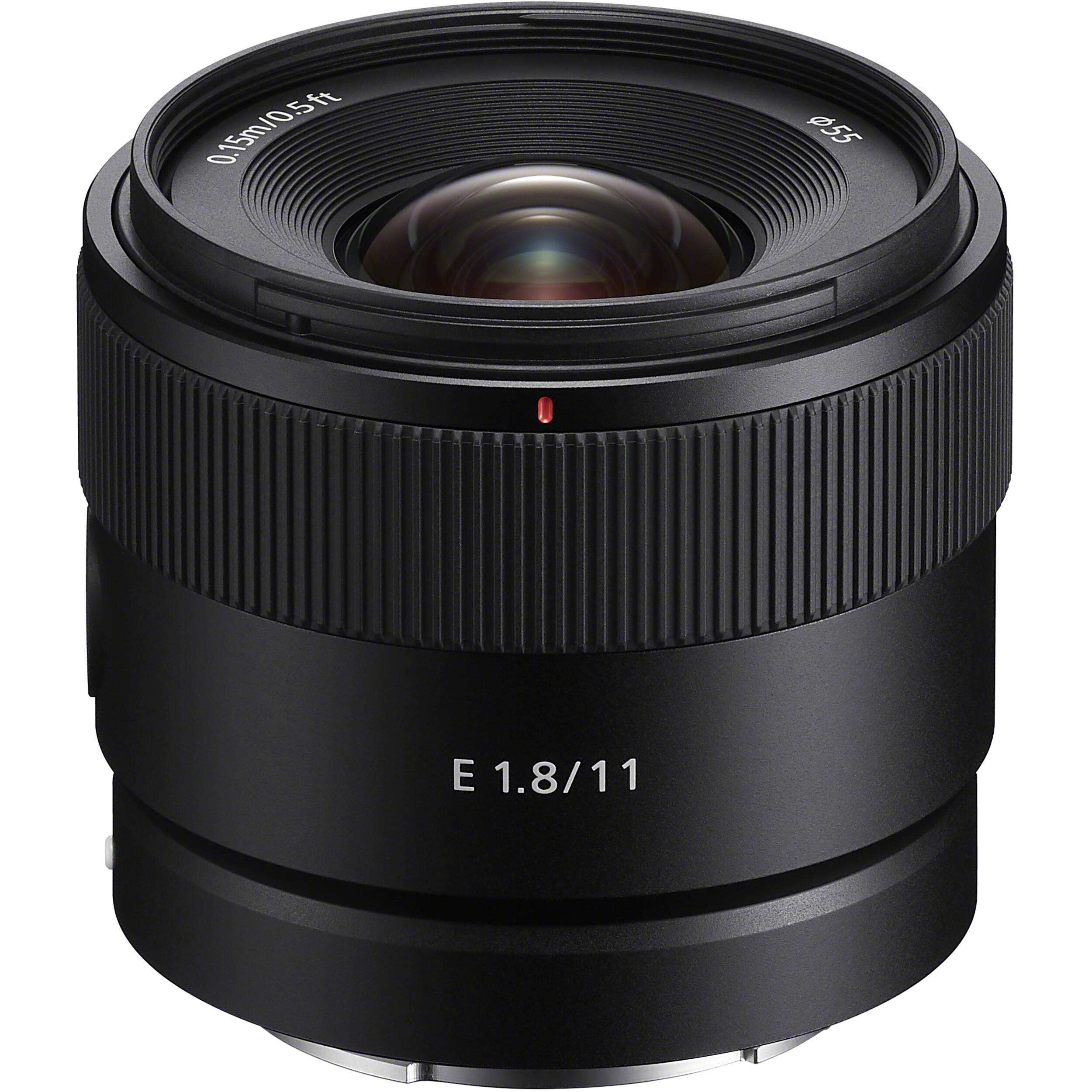
Best E prime lens
A compact and lightweight ultra-wide prime that is ideal for vlogging and capturing moments with APS-C cameras.
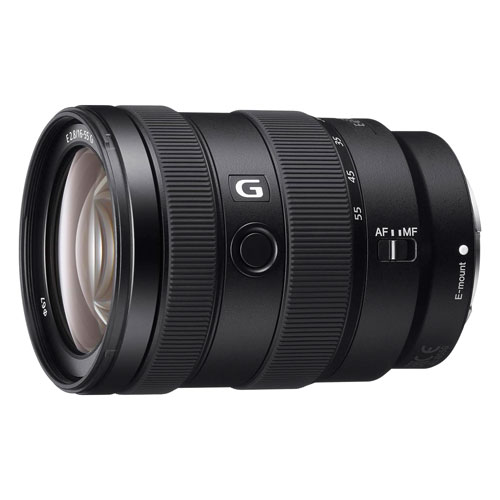
Best E zoom lens
The Sony E 16-55mm f/2.8 G lens is a versatile zoom lens for APS-C cameras, delivering excellent image quality and a constant f/2.8 aperture.

Best FE zoom lens
The Sony FE 12-24mm f/2.8 G Master lens is a high-performance ultra-wide zoom with exceptional sharpness and a constant f/2.8 aperture across its range.
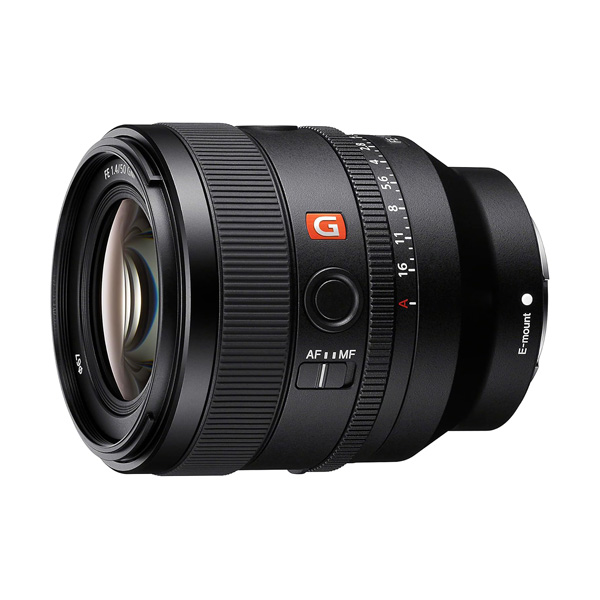
Best 50mm lens
This 'nifty-fifty' lens is a superb balance of sharpness, beautiful bokeh and a compact design for a fast 50mm.
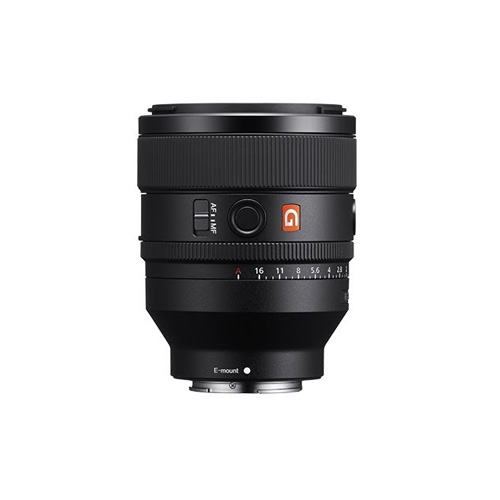
Biggest aperture lens
This is an incredibly fast 50mm prime, delivering outstanding low-light performance and creamy bokeh with a huge f/1.2 aperture.
Load the next product↴

Best telephoto lens
A professional-grade telephoto zoom with crystal-clear detail, speed and optical steady shot technology for image stabilization.
Best Sony lenses we recommend in 2025
Why you can trust Space.com
Best FE wide angle prime lens


Specifications
Reasons to buy
Reasons to avoid
✅ You prioritize portability: Its remarkably compact and lightweight design makes it easy to carry for extended periods.
✅ You frequently shoot in low light or need a wide angle: The fast f/1.8 aperture allows for superb light gathering in dim environments and astrophotography, plus the 14mm focal length is perfect for wide-angle shots.
❌ You use screw-in filters: The lack of a front filter thread necessitates using fiddly rear gel filters or specialized filter holders.
❌ You are on a tight budget: As a G Master lens, it comes with premium glass elements and a price tag to match.
🔎 The Sony FE 14mm f/1.8 GM lens is an outstanding achievement in optical quality, delivering truly exceptional images in a compact and lightweight package. It's a top choice for a range of specialisms from astro and landscape to portrait photography.
The Sony FE 14mm f/1.8 GM lens is a testament to Sony's G Master series, offering an incredibly wide 14mm focal length paired with a super-fast f/1.8 aperture. Despite its impressive specifications, it boasts a remarkably compact design and weighs just over 16 ounces (460 g). It's an ideal companion for Sony E-mount full-frame cameras, particularly for those looking to capture expansive astro shots, wide landscapes and architectural shots. The optical designs features 14 elements including two extreme aspherical elements and one super extra-low dispersion element which are designed to deliver superb resolution from corner to corner.
The lens performed well during astrophotography testing in our full Sony FE 14mm f/1.8 GM lens review. Its wide-open sharpness is truly impressive, with coma aberration well controlled, leading to pinpoint stars across the frame. The f/1.8 aperture allows for significant light gathering, enabling shorter exposure times or lower ISO settings, something that helped us get clear photos of the Milky Way during our testing. The fast and quiet autofocus, powered by two linear Motors, proved reliable even in low-light conditions.
While the lens offers outstanding image quality, it does come with a few considerations. The bulbous front element means there's no traditional front filter thread, requiring the use of rear gel filters or specialized external filter holders. We also observed noticeable vignetting at f/1.8, though this is common for ultra-wide lenses and can often be corrected in post-processing. The build quality is as expected for a G Master lens, featuring a robust dust and moisture-resistant design, making it suitable for challenging conditions.
The lens also includes a customizable focus hold button and a de-clickable aperture ring, which is a valuable feature for videographers. Its minimum focus distance of 9.8 inches (25 cm) allows for interesting close-up perspectives, although its primary strength lies in its wide-angle capabilities. The Sony FE 14mm f/1.8 GM lens is a significant investment, but its performance and portability justify the cost for serious photographers and astrophotographers.
- Read our Sony FE 14mm f/1.8 GM lens review
Attributes | Notes |
|---|---|
Design | Small and lightweight |
Performance | Sharp and distortion free astrophotography |
Functionality | Fast aperture for low-light and excellent autofocus |
Best E prime lens
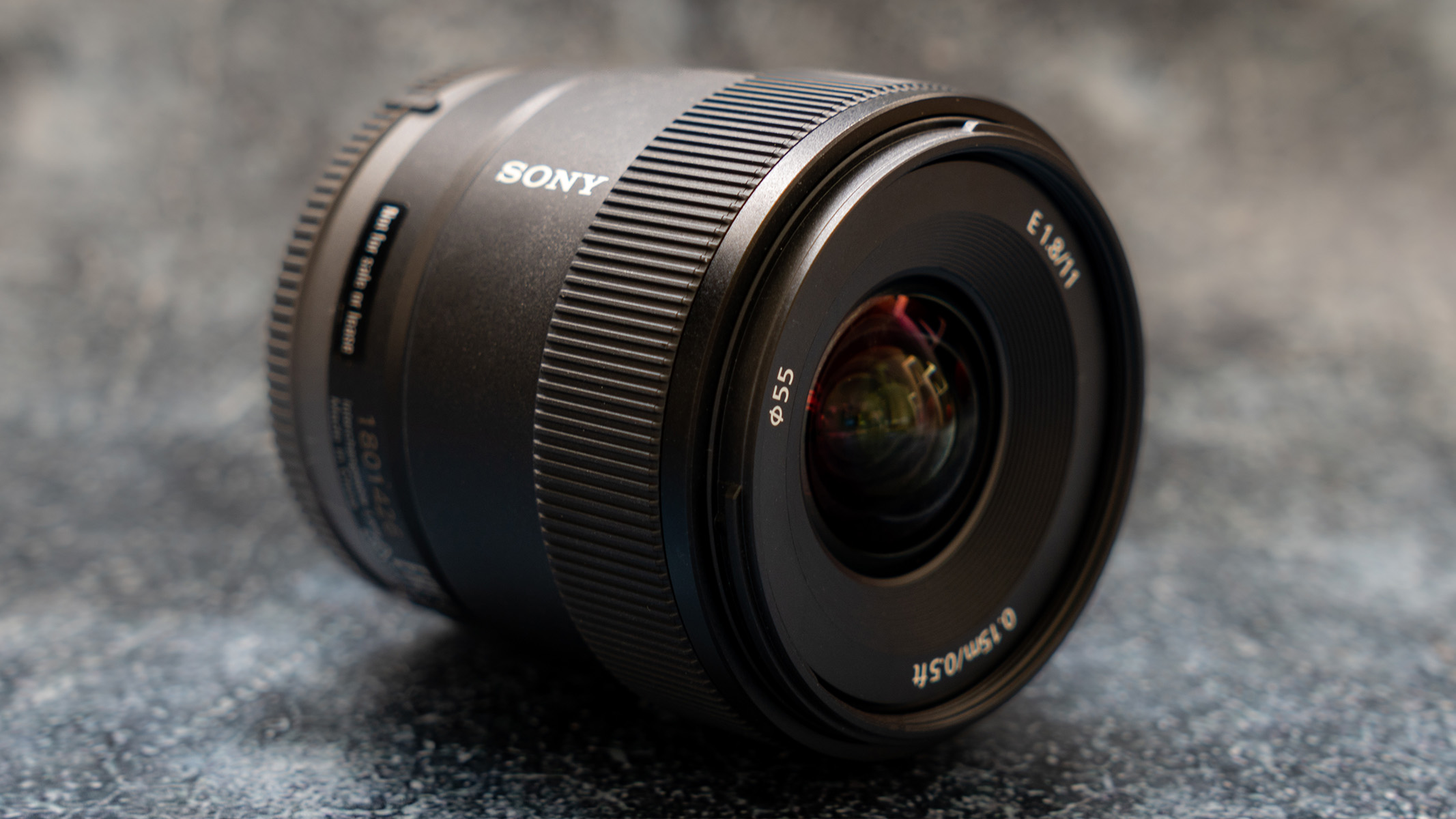

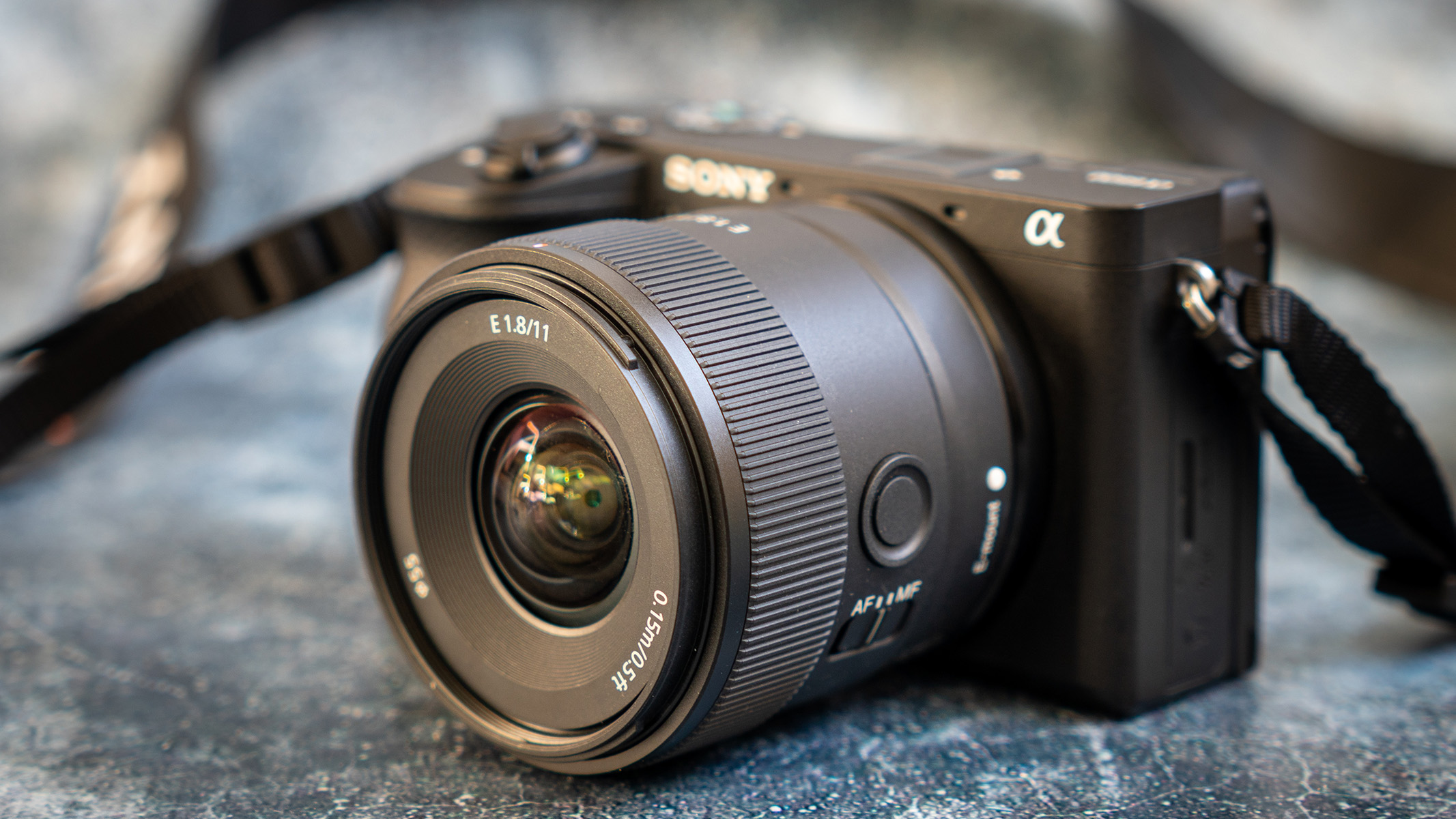
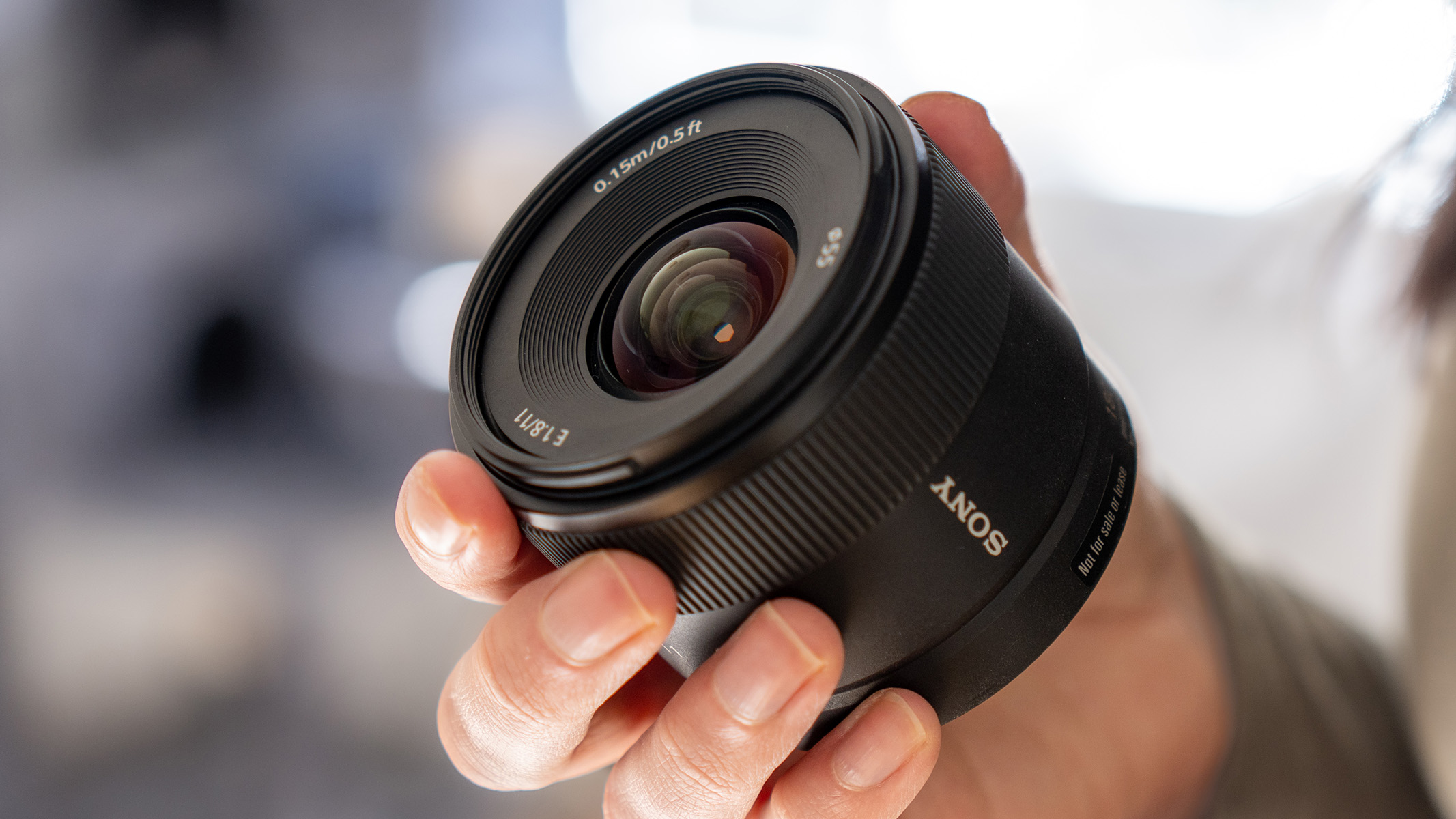
Specifications
Reasons to buy
Reasons to avoid
✅ You are a vlogger or content creator: Its wide field of view and compact size are perfect for handheld video and self-recording. Pair it with one of Sony's crop sensor cameras like the A6000 series or Sony ZV-E10
✅ You want a portable ultra-wide lens for your APS-C camera: This compact lens allows you to get ultra-wide perspectives and the fast f/1.8 aperture is perfect for low-light scenarios.
❌ You use a full-frame Sony camera: If you have a Sony full-frame camera then this lens will reduce the sensor size to fit the lens, one of Sony's FE lenses will suit your set-up better.
❌ You need maximum corner-to-corner sharpness: This lens is generally sharp but occasionally there is softness and aberrations. If you prioritise edge-to-edge sharpness then you should take a look at Sony's G-master series of lenses.
🔎 Sony E 11mm f/1.8 lens: An impressive ultra-wide prime for Sony APS-C cameras, offering a compelling blend of portability, a bright aperture and strong performance for both stills and video.
The Sony E 11mm f/1.8 lens is part of Sony's APS-C E-mount lineup, designed specifically for cameras with the smaller sensor format. Its headline feature is the ultra-wide 11mm focal length combined with a fast f/1.8 maximum aperture, making it highly versatile for a range of subjects from landscapes to astrophotography. With a weight of just 6.3 ounces (178 g) it is one of the lightest and smallest lenses in its class, complementing the compactness of Sony's Alpha APS-C cameras.
In our full Sony E 11mm f/1.8 lens review, we found this lens truly excelled in its astrophotography tests, it managed to capture the Milky Way and skies full of pin-sharp stars. We also thought it would perform well for many different photography styles, including cityscapes, architecture and landscapes.
However, like many ultra-wide lenses, it's not without its quirks. We noted some visible vignetting at f/1.8, particularly in the corners, though this can often be corrected in post-processing. The lens includes an assignable focus hold button and a linear response manual focus for precise control.
The Sony E 11mm f/1.8 lens has a dust and moisture-resistant design, adding to its durability. Its 55mm filter thread is a common size, making it easy to share filters with other lenses. While it is an APS-C dedicated lens, its performance and form factor make it an attractive option for photographers seeking a portable and capable ultra-wide perspective without the full-frame cost. It has an accessible price point but still delivers the high-quality performance associated with the Sony E-mount system.
- Read our Sony E 11mm f/1.8 lens review
Attributes | Notes |
|---|---|
Design | Super small and compact. |
Performance | Pin sharp stars achieved in astrophotography. |
Functionality | Fast f/1.8 aperture and weather sealed. |
Best E zoom lens
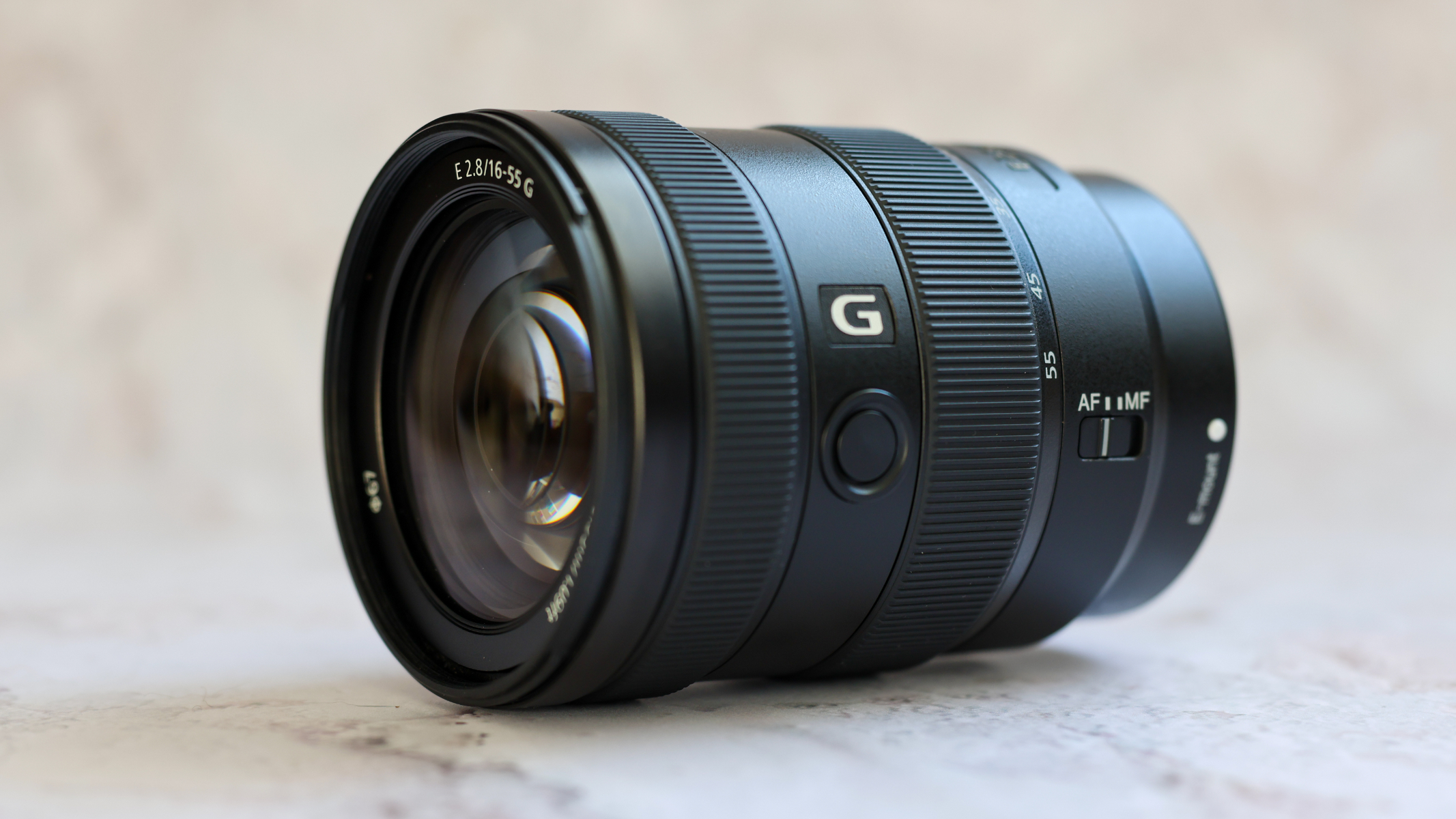
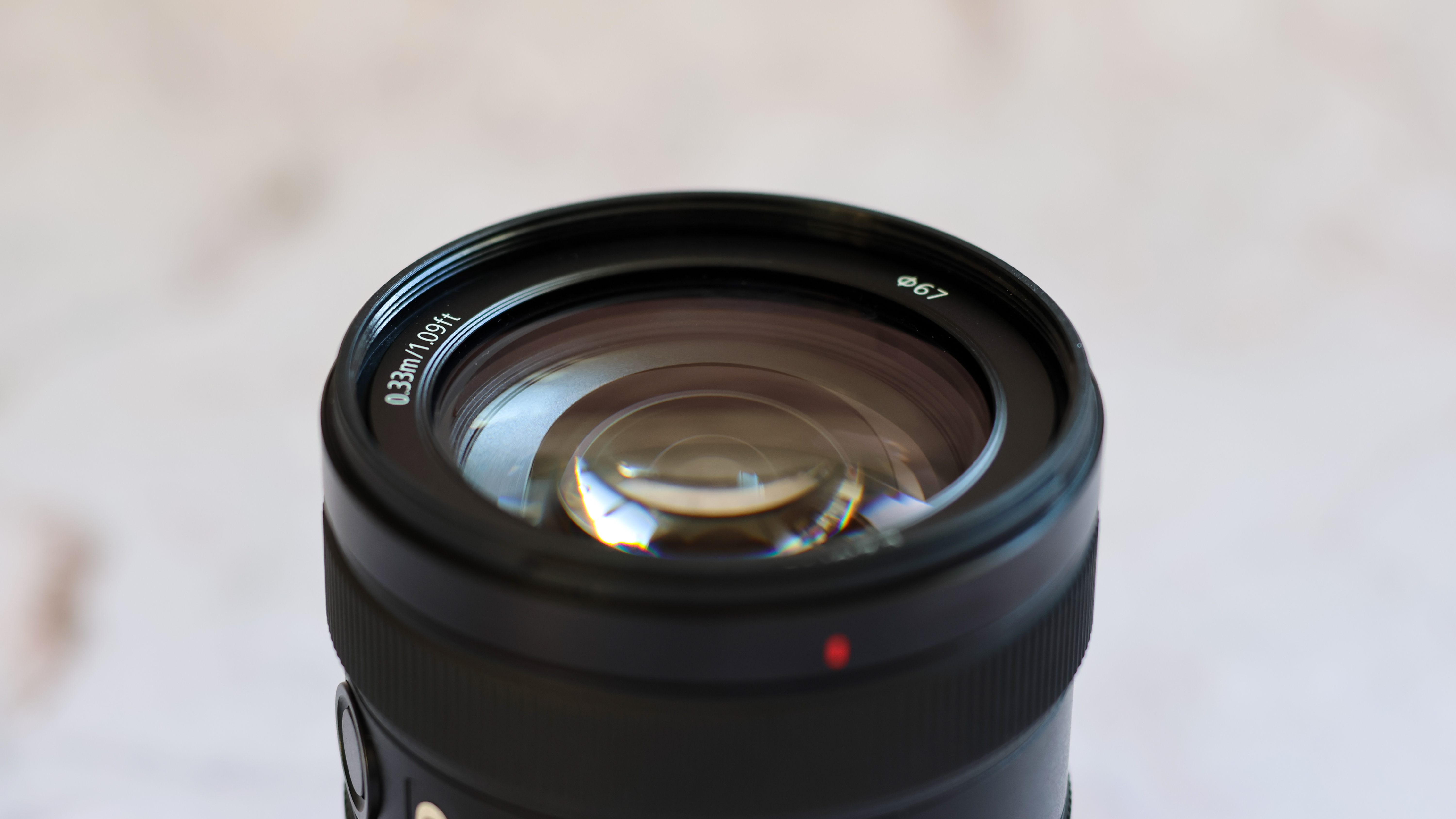
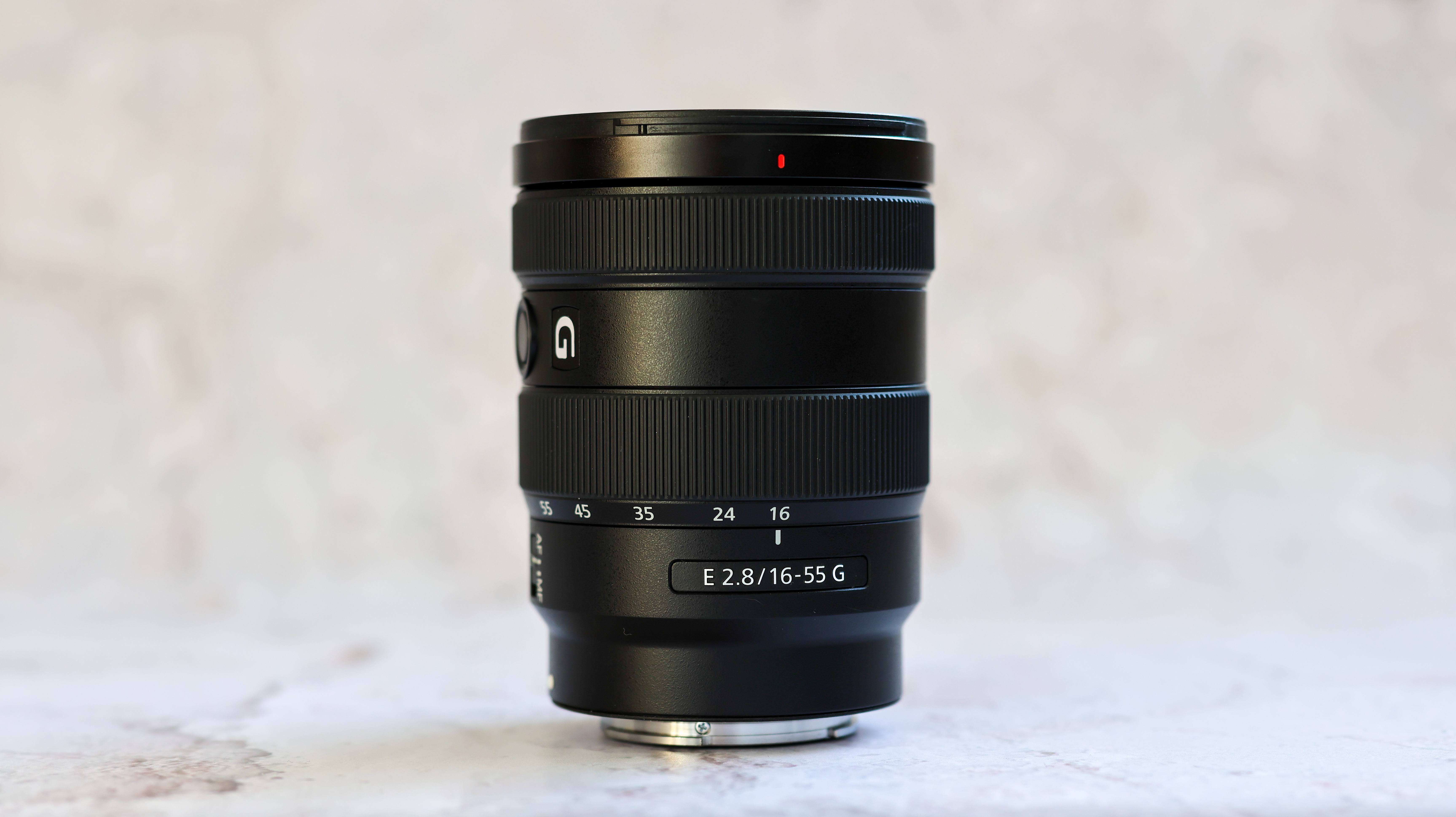
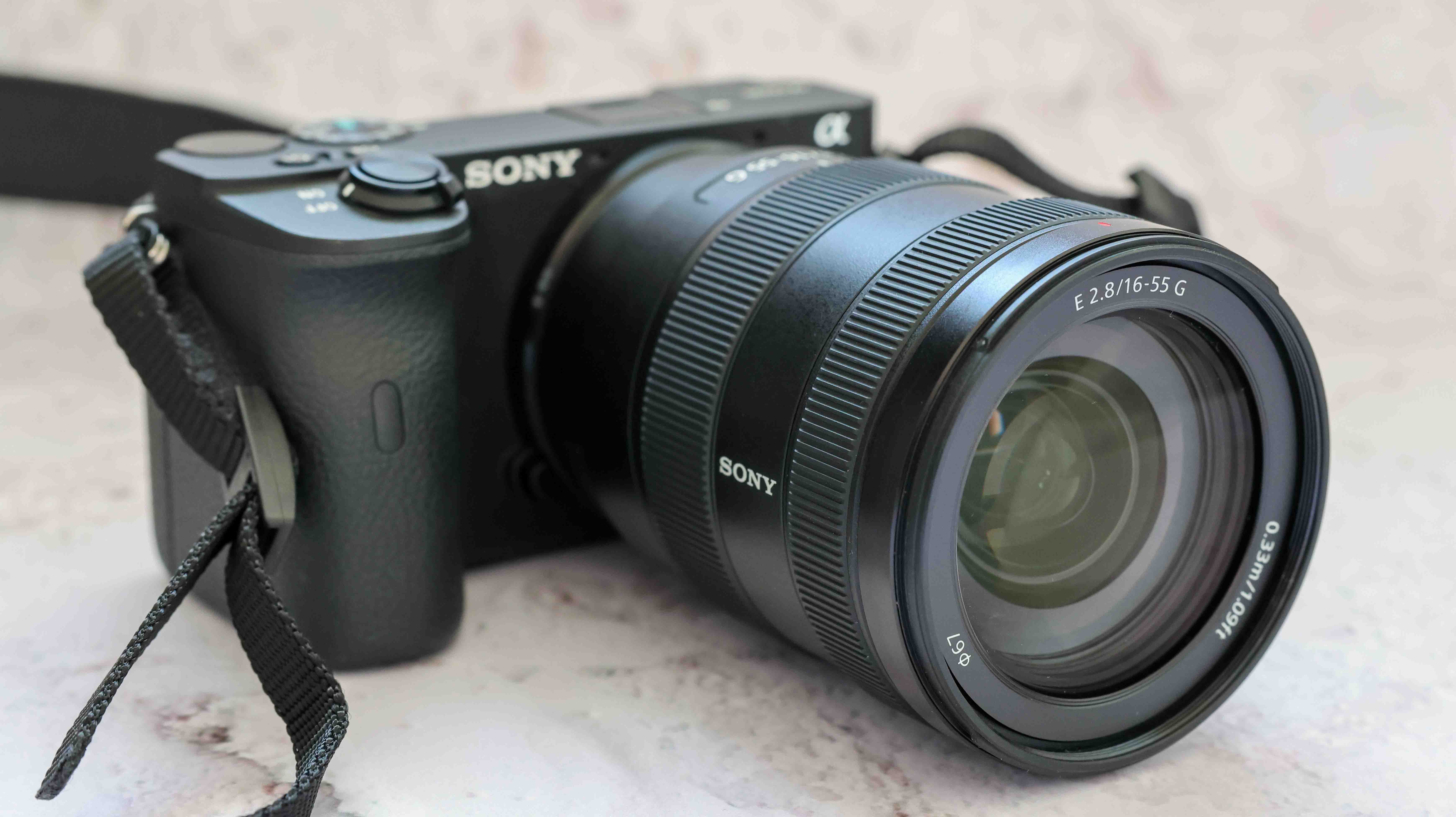
Specifications
Reasons to buy
Reasons to avoid
✅ You need a professional-grade standard zoom for your APS-C camera: Its constant f/2.8 aperture and G lens quality make it suitable for professionals and demanding hobbyists.
✅ You frequently shoot in varied lighting conditions: The wide f/2.8 aperture captures detail in dim conditions, delivers a shallow depth of field and can shoot good astro.
❌ Your camera lacks in-body image stabilization (IBIS): There is no optical stabilization with this lens, so if you need image stabilization, it must come from your camera.
❌ You are on a tight budget for a standard zoom: This G-series lens comes with a professional-aimed price tag and can feel like a significant investment.
🔎 The Sony E 16-55mm f/2.8 G is a top-tier standard zoom for Sony APS-C users, offering exceptional image quality and a useful constant f/2.8 aperture. The lack of optical stabilization may put some photographers off but its robust performance makes it an excellent all-around lens.
This is Sony's answer to a professional-grade standard zoom lens for its APS-C E-mount cameras, such as the A6000 series or ZV series. It is equivalent to a 24-82.5mm lens on a full-frame model and it features a constant f/2.8 maximum aperture, making it a great option for everything from everyday photography to specialist styles like astrophotography and portraiture. The lens is surprisingly compact for its specifications and balances well on smaller APS-C bodies. Its optical construction features two advanced aspherical elements, two aspherical elements and three extra-low dispersion glass elements to ensure high resolution and minimal aberrations.
In our Sony E 16-55mm f/2.8 G lens review, we noted the high image quality across the zoom range, even when wide open at f/2.8. Autofocus performs well in good light but can struggle in low-light settings. That being said, the f/2.8 aperture is suitable for astrophotography and produces smooth bokeh for top-notch subject isolation. This fast aperture is constant across the entire zoom range, meaning you can control depth of field at any focal length.
One notable absence from this lens is optical image stabilization (OIS). While many modern Sony APS-C cameras feature in-body image stabilization (IBIS), users with older bodies or those who prefer optical stabilization might find this a drawback. We did observe tiny amounts of barrel distortion at the wider end of the zoom range, which is common for lenses of this type but is easily correctable in post-processing. The front lens element has a fluorine coating which repels water and oil, adding more protection to the robust waterproof design.
The Sony E 16-55mm f/2.8 G includes a customizable focus hold button and a zoom lock switch. This lens is a premium offering within the APS-C ecosystem but if you demand the best optical performance, it proves to be a worthwhile investment to elevate your photography.
- Read our Sony E 16-55mm f/2.8 G review
Attributes | Notes |
|---|---|
Design | Robust and weather resistant build |
Performance | Sharp optical performance with accurate focus. |
Functionality | Constant f/2.8 aperture and versatile focal length. |
Best FE zoom lens
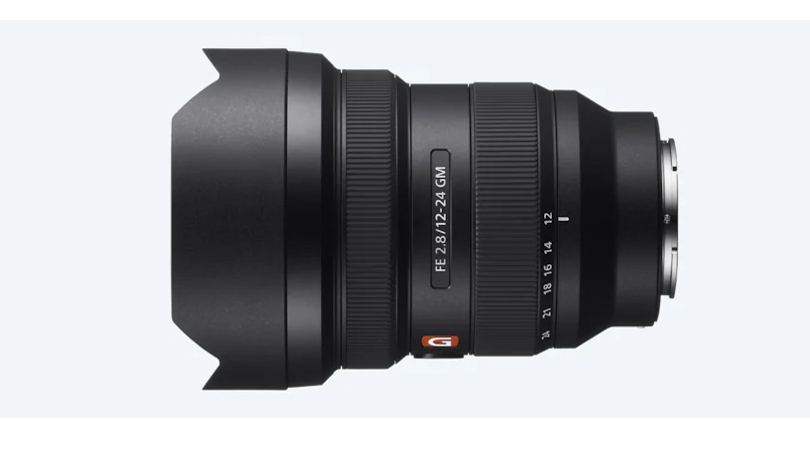
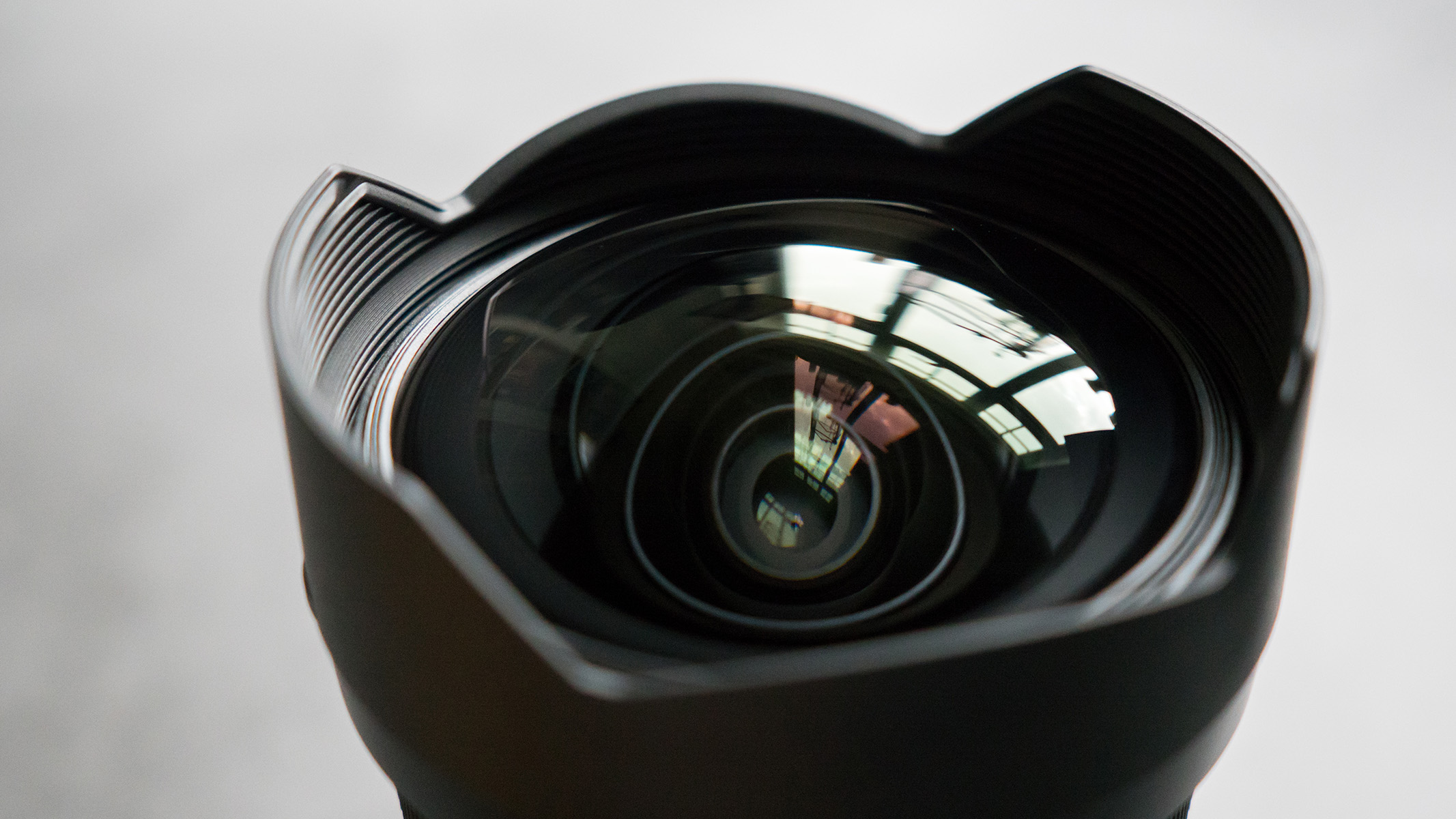
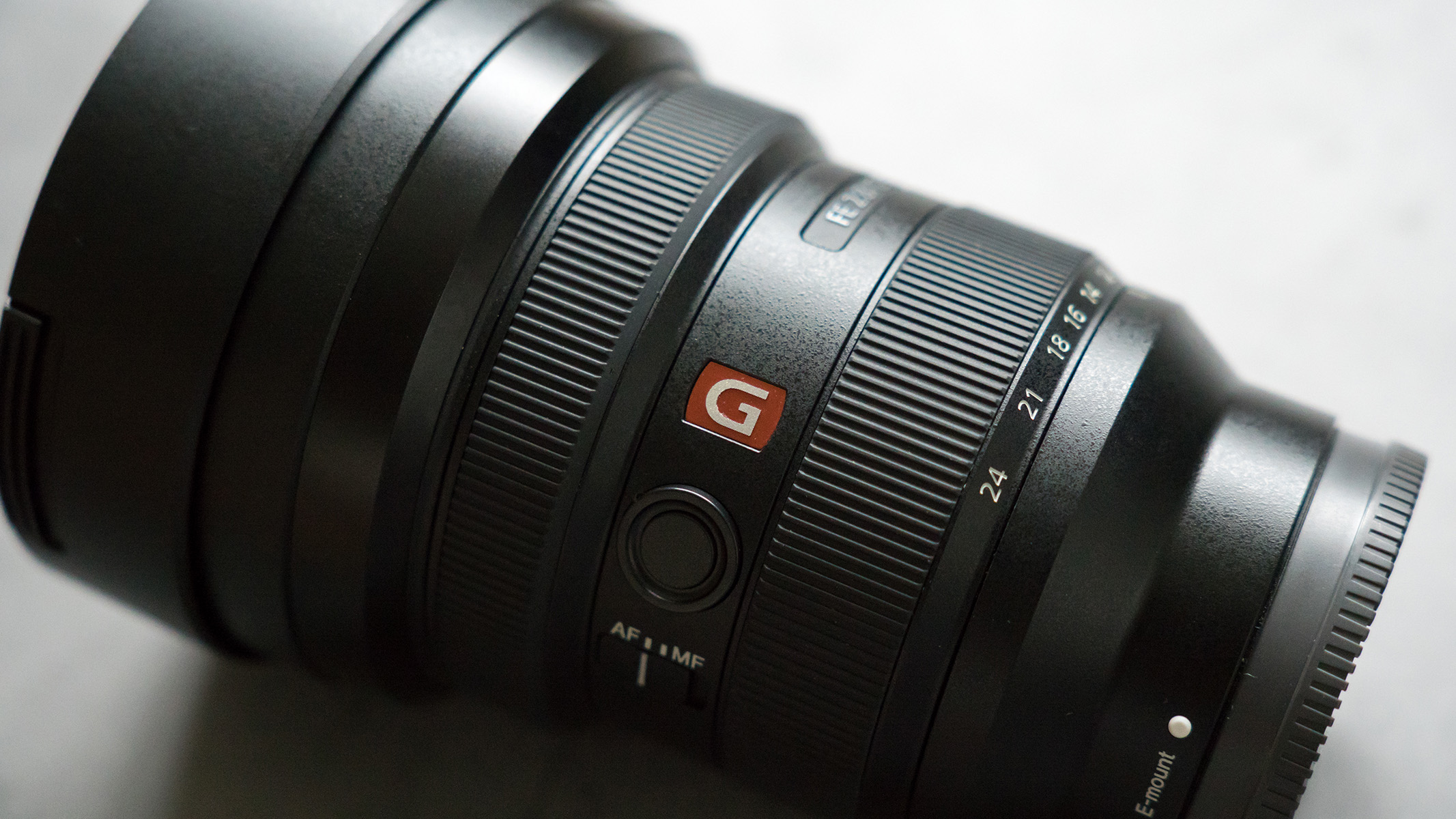
Specifications
Reasons to buy
Reasons to avoid
✅ You require a robust ultra-wide zoom for professional work: Its G Master performance makes it suitable for demanding landscape, architectural and astrophotography with the best image quality.
✅ You need a bright aperture across a range of focal lengths: A constant f/2.8 aperture allows for excellent low-light capability and depth of field control.
❌ You frequently use traditional screw-in filters: The bulbous front element prevents traditional screw in filters so gel or specialised filters will be needed.
❌ You are on a tight budget: This lens is part of the G Master series, meaning premium performance but with a price tag to match.
🔎 This lens delivers exceptional image quality, a constant f/2.8 aperture and a robust build. The Sony FE 12-24mm f/2.8 G Master lens is a powerful tool that captures sharp images in a range of light conditions and angles.
The Sony FE 12-24mm f/2.8 G Master lens is a top-of-the-line ultra-wide zoom for Sony's full-frame E-mount cameras. It brings a range of wide-angle focal lengths and powerful low-light performance from the constant f/2.8 aperture. Despite its advanced optics, it maintains a manageable size, measuring 3.8 x 5.2 inches (97.6 x 137 mm) and weighing 1.86 pounds (847 g). The optical design features 17 elements with three extreme aspherical elements, one aspherical element, three extra-low dispersion (ED) glass elements, two super ED glass elements, all working together to eliminate aberrations and deliver sharpness edge to edge.
In our full Sony FE 12-24mm f/2.8 G Master lens review, we rated the image quality highly and found sharpness from edge to edge, even at f/2.8, and particularly at the 12mm focal length. It is an ideal choice for capturing pinpoint stars during astrophotography, when edge-to-edge sharpness is needed. The autofocus system is driven by four extreme dynamic (XD) linear motors, and is fast and precise, capable of keeping up with demanding shooting scenarios.
The optical design has a bulbous front element, necessary for achieving such a wide field of view with a fast aperture but it means that traditional screw-in filters won't work. The lens boasts the typical G Master build quality, with a dust and moisture-resistant design and a fluorine coating on the front element for easy cleaning. The barrel of the lens features a custom focus hold button and a zoom lock switch.
The Sony FE 12-24mm f/2.8 G Master lens is a high-end piece of glass and this is reflected in its price. However, for professional landscape, architectural, and astrophotographers who require a super wide perspective with no compromises on image quality or aperture, this lens will be a welcome companion.
Attributes | Notes |
|---|---|
Design | Sturdy and well built internal zoom. |
Performance | Sharp details with great tracking. |
Functionality | Constant f/2.8 aperture with smooth focusing. |
Best 50mm lens
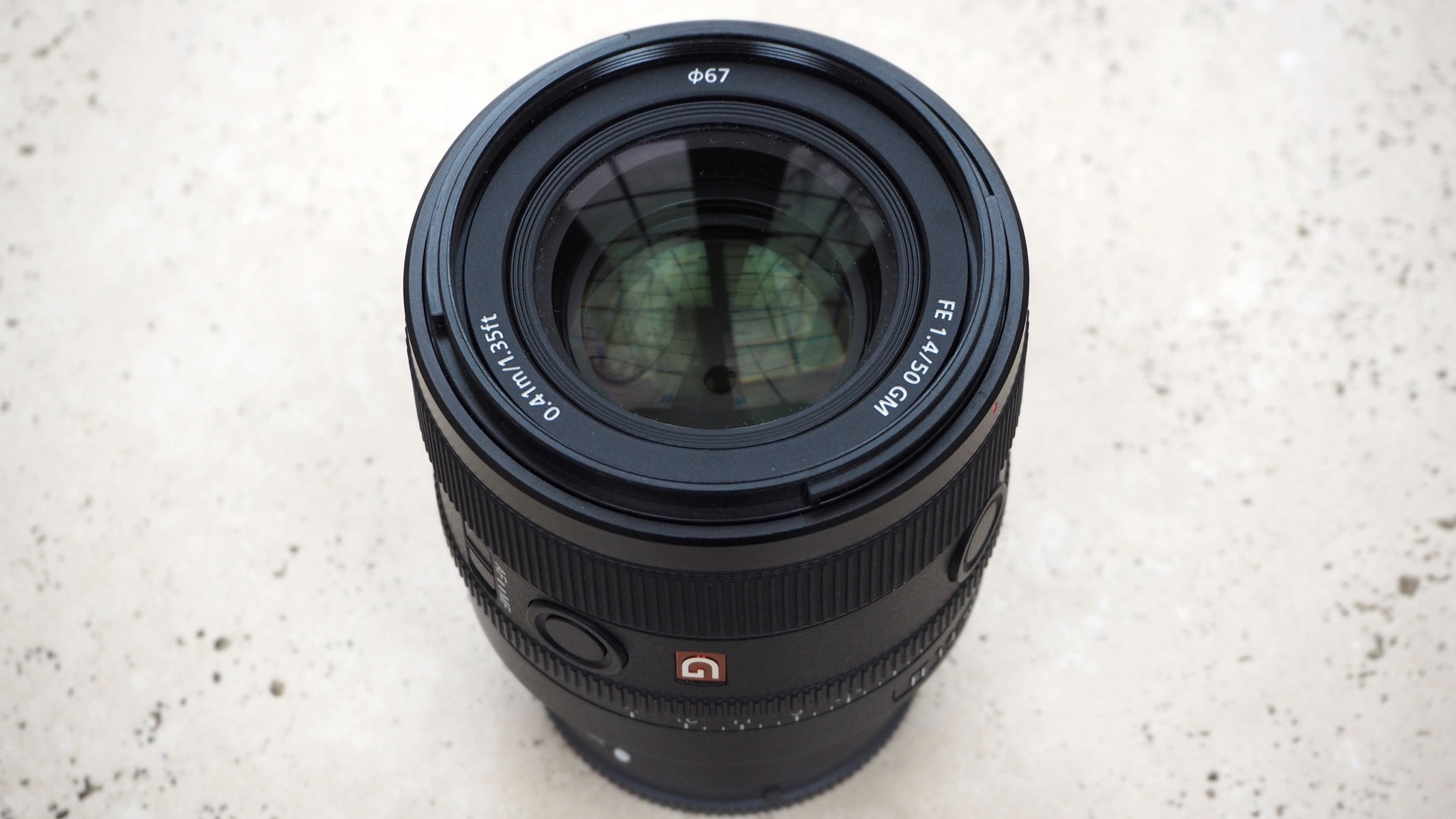

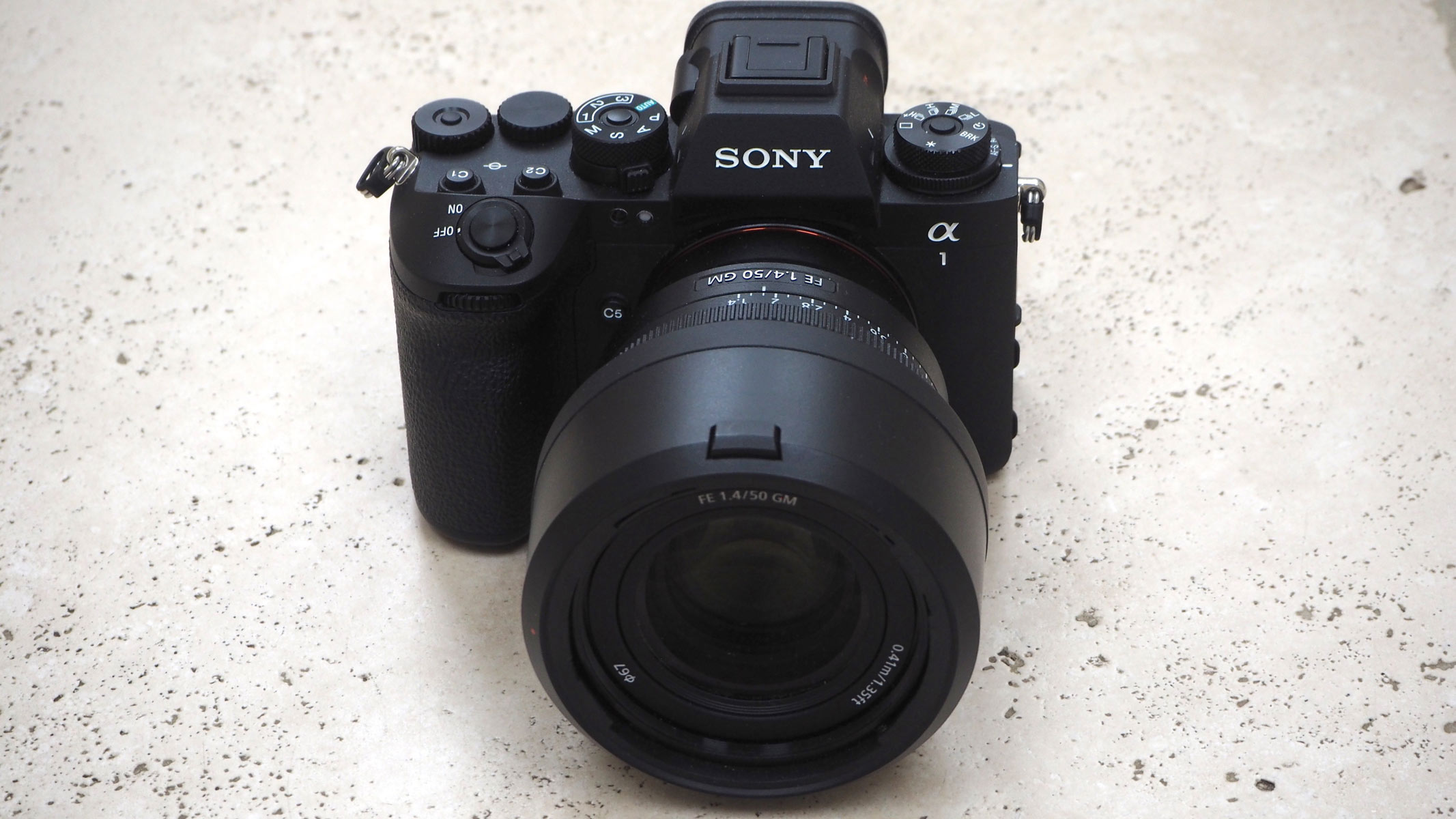
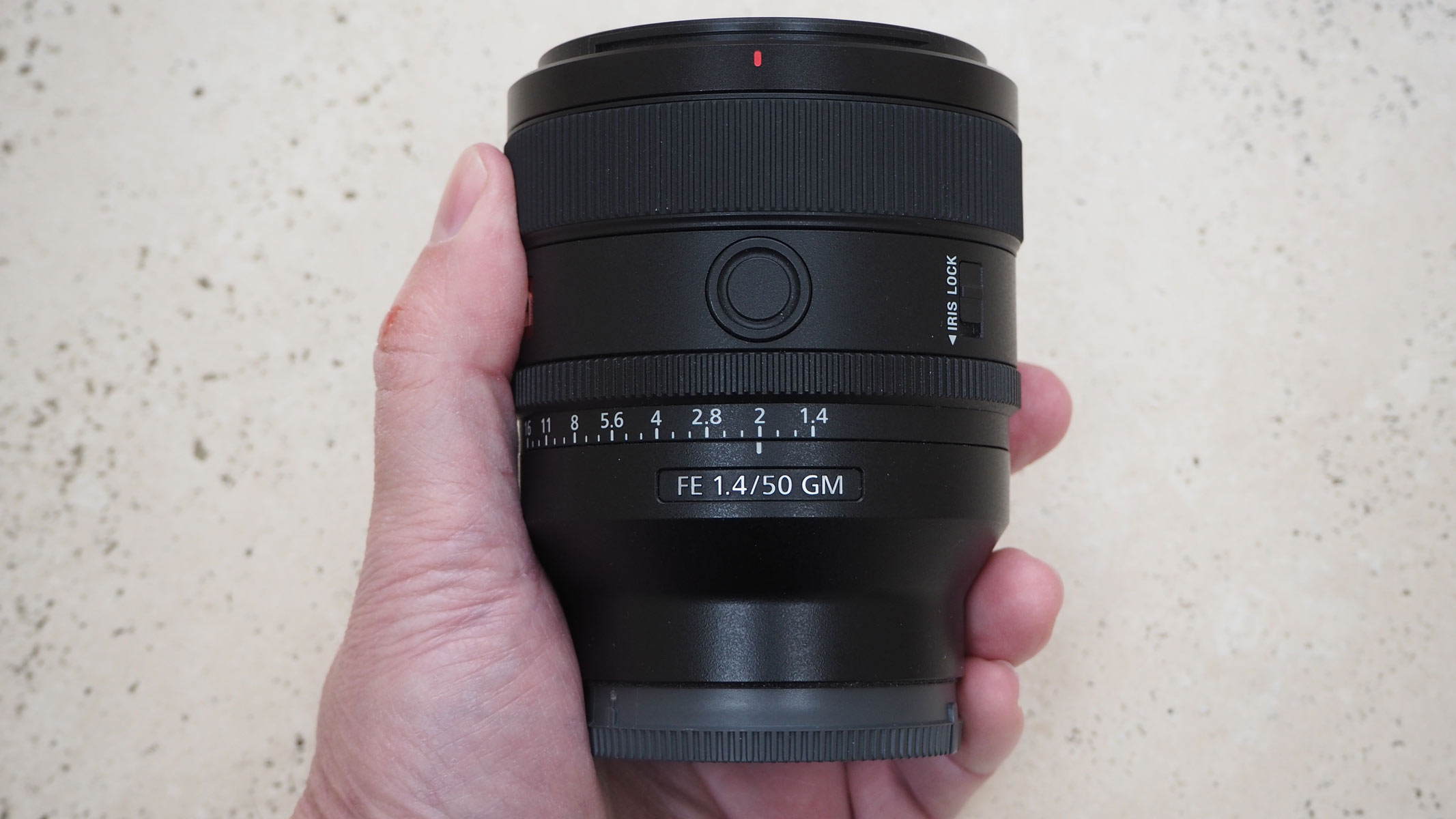
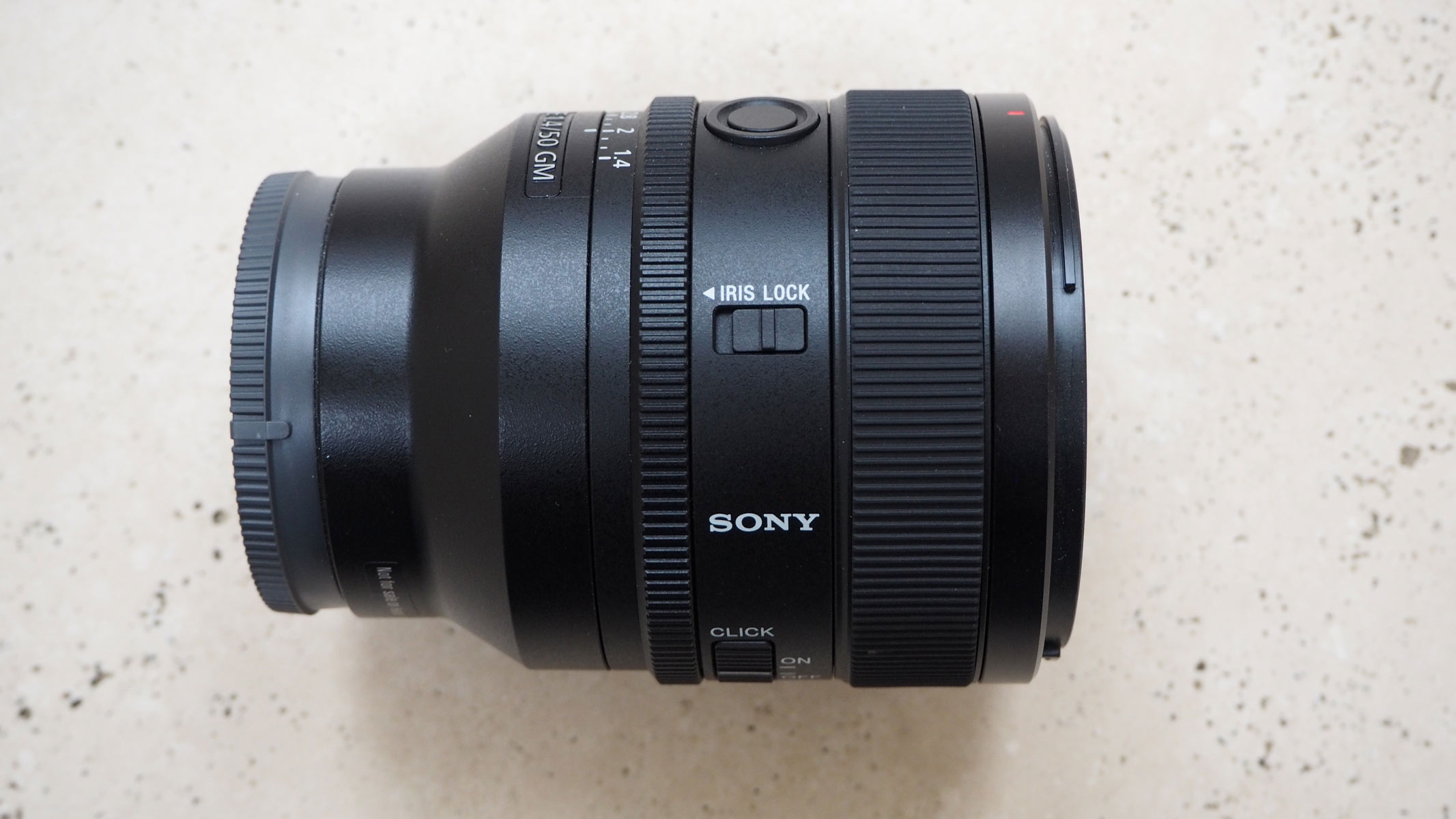
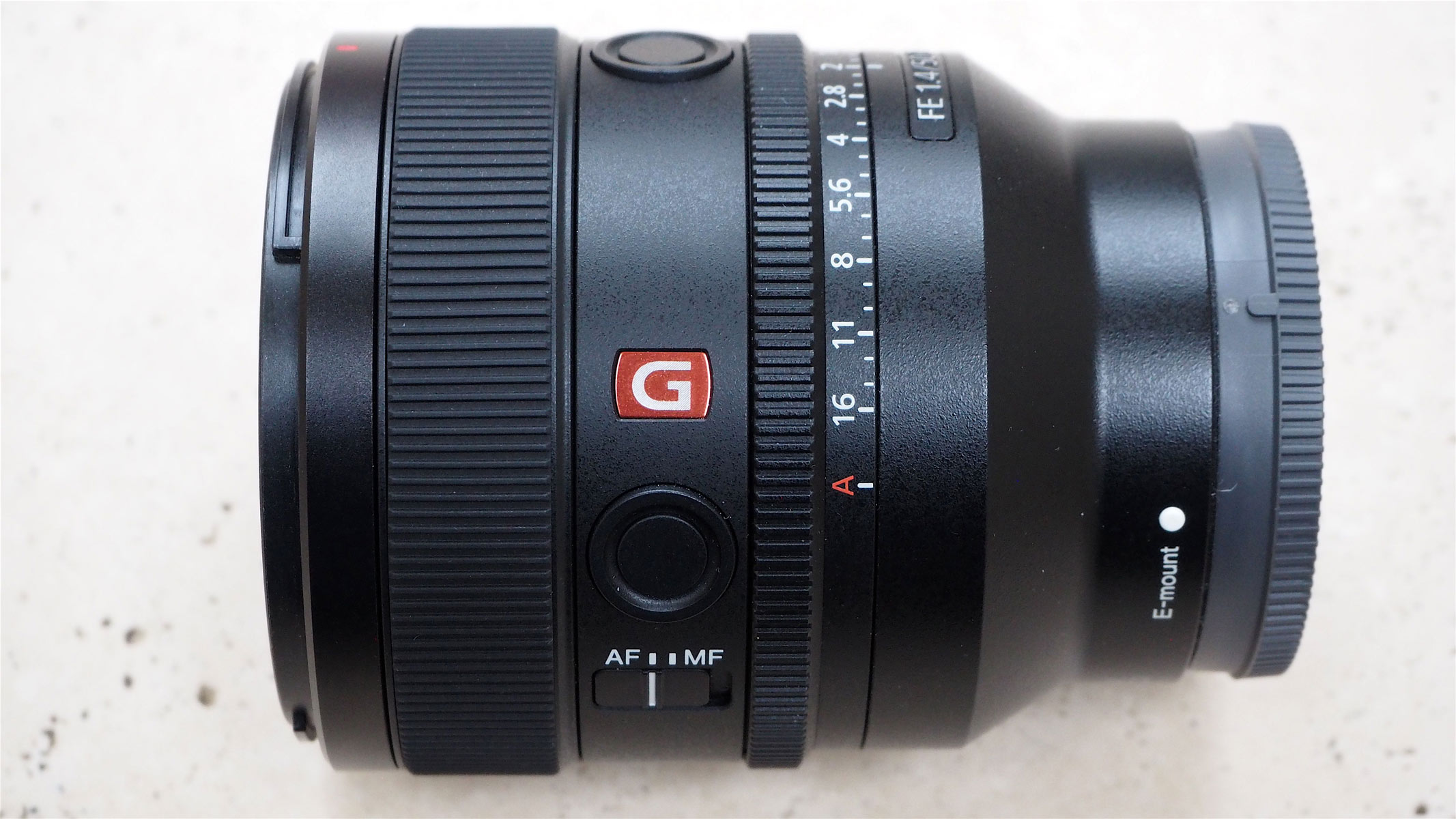
Specifications
Reasons to buy
Reasons to avoid
✅ You need a standard prime with a fast aperture: 50mm provides a good focal length for a range of photography styles and allows added benefits from the max f/1.4 aperture such as creamy bokeh and great low-light performance.
✅ You want a portable lens without sacrificing quality: This lens is relatively compact and portable, even with a rapid f/1.4 aperture and G-master optics
❌ You prioritize the largest aperture: The Sony FE 50mm f/1.4 GM lens offers a slightly brighter maximum aperture if you really need the biggest aperture as possible.
❌ You find yourself shooting in wildly different focal lengths: While 50mm is a good standard focal length, it might not be enough for people who shoot from wide-angle to telephoto focal length.
🔎 The Sony FE 50mm f/1.4 GM is a masterclass in optical design, offering exceptional sharpness, stunning bokeh and great low-light performance in a compact and well-built package. It strikes a fantastic balance for photographers seeking a powerful standard prime.
The Sony FE 50mm f/1.4 GM lens is another G-master lens that combines optical quality with a rapid aperture. With a max aperture of f1/.4, this lens provides great low-light performance, creamy bokeh and great subject isolation. weighing in at 18.2 ounces (516 g), it is considerably lighter and smaller than the Sony FE 50mm f/1.2 GM lens. Its optical construction includes two extreme aspherical elements and one extra-low dispersion lens element to control aberrations and maintain sharp resolution.
In our full Sony FE 50mm f/1.4 GM lens review we praised the 50mm focal length, which provided a natural field of view for portraits and still life images. The fast f/1.4 aperture made shooting in dim environments a breeze and captured plenty of light. The fast f/1.4 aperture produced acceptable results when paired with the Sony Alpha A1 II. Vignetting and coma distortion are well under control thanks to the G-master quality optics.
Some reviewers have noted a degree of focus breathing, which can be a concern for videographers, although newer Sony cameras offer in-camera compensation for this. This lens features the classic dust and moisture-resistant construction with a fluorine coating on the front element, which repels moisture and oil. The aperture ring has a de-click switch for silent aperture transitions during video recording, along with two custom focus buttons.
With a 67mm filter thread, it's compatible with a wide range of standard filters. The Sony FE 50mm f/1.4 GM positions itself as a lens option that bridges the gap between Sony's accessible 50mm primes and the flagship f/1.2 GM lens. It offers the same optical excellence of the f/1.2 but in a more portable package. It is a premium lens, but its performance and versatility make it a strong contender for any Sony photographer.
Attributes | Notes |
|---|---|
Design | Focus-hold buttons and compact build. |
Performance | Great low-light performance and creamy bokeh. |
Functionality | Minimal chromatic aberration for sharp stills. |
- Read our full Sony FE 50mm f/1.4 GM lens review
Biggest aperture lens
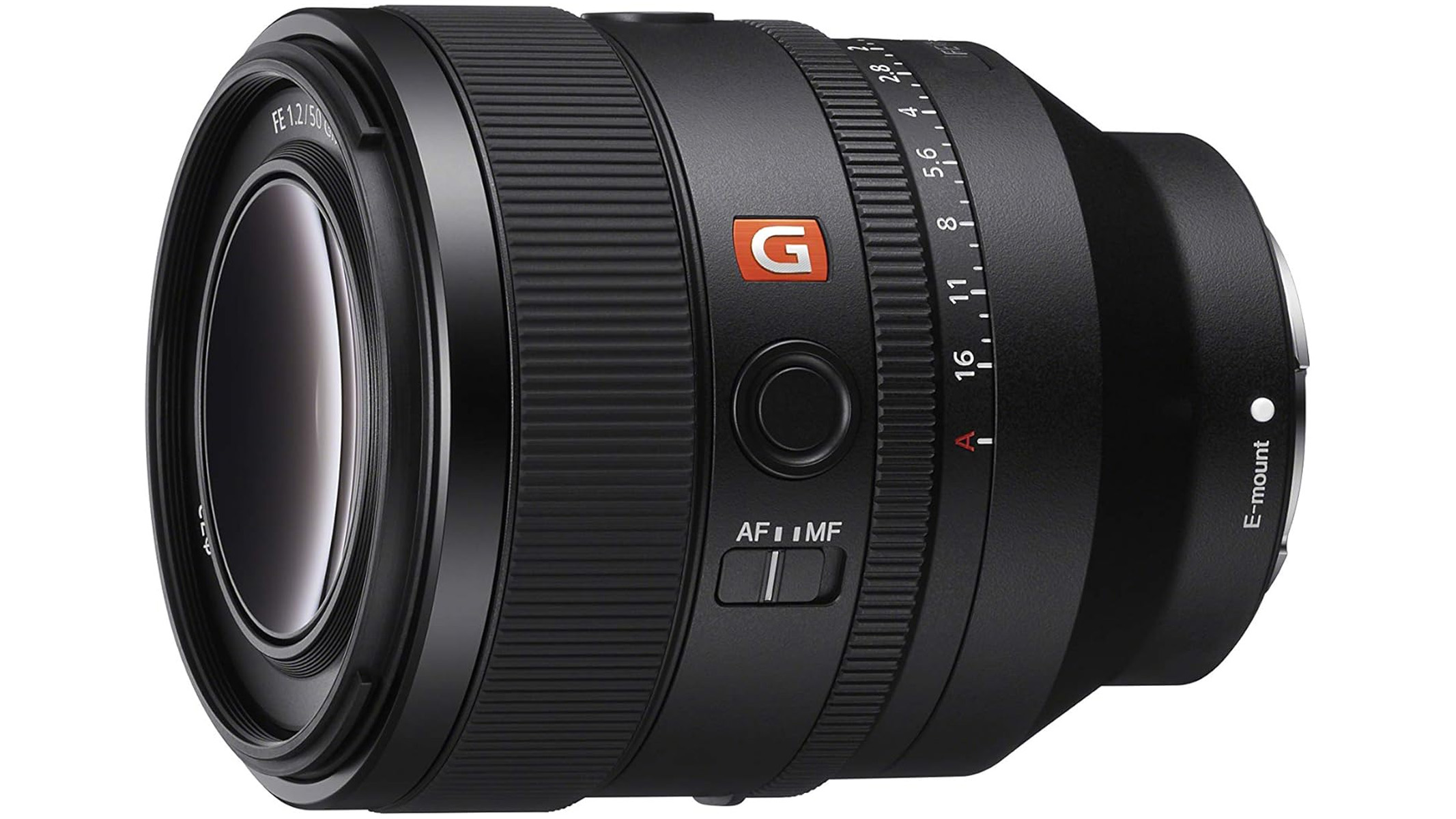
Sony FE 50mm f/1.2 GM
Our expert review:
Specifications
✅ You demand the absolute best low-light performance and shallow depth of field: The extreme f/1.2 aperture provides unparalleled light gathering and subject isolation.
✅ You prioritize ultimate image quality and creamy bokeh: G Master optics and a rapid aperture give you the best image quality available for a Sony camera.
❌ You prioritise portability: It weighs a lot more than slower 50mm primes and will add considerable weight and size to your kit
❌ Your budget is a significant constraint: This is a flagship G Master lens and comes with a large price tag to match.
🔎 The Sony FE 50mm f/1.2 GM is a statement lens, delivering outstanding image quality, extraordinary low-light capability and some of the smoothest bokeh. Itbuilt for photographers who are willing to invest in the ultimate 50mm prime.
The Sony FE 50mm f/1.2 GM is Sony's flagship standard prime lens, boasting a massive f/1.2 maximum aperture for their E-mount system. This aperture allows for incredible low-light shooting but also creates an exceptionally shallow depth of field for perfect subject isolation and beautiful bokeh. Sony has managed to keep its size and weight manageable and is one of the lightest f/1.2 lenses available at 1.71 pounds (778 g). The lens design features extreme aspherical lens elements to minimize aberrations and eleven diaphragm blades to produce a smooth circular aperture, crucial for perfect bokeh.
While we haven't specifically reviewed the f/1.2 model, we have reviewed the Sony FE 50mm f/1.4 lens and were thoroughly impressed with its low-light capability and subject isolation. We can only expect the f/1.2 version of this lens to have even better low-light ability and more exquisite bokeh. Its reception across the photography community has been overwhelmingly positive. Reviewers consistently praise its optical performance, with sharpness being outstanding even wide open at f/1.2, extending well into the corners. Photographers also love the rapid and precise autofocus, which is powered by extreme dynamic linear motors.
As with any ultra-fast prime, there are some minor trade-offs. Some vignetting has been reported at f/1.2 but this is easily correctable in post-processing or by stepping down the apertures. While it is one of the lightest f/1.2 lenses available, it is still a hefty lens to use for handheld shooting and could make your setup significantly heavier.
Some vignetting is present at f/1.2, but it quickly dissipates as the aperture is stopped down and is easily correctable in post-processing. While it is more compact than some f/1.2 rivals, its weight is still substantial, particularly for extended handheld use.
The Sony FE 50mm f/1.2 GM sits at the top of Sony's prime lenses and is designed for photographers and videographers who demand the absolute best in terms of light-gathering capability and artistic control over depth of field. The professional grade G-master optics are dust and moisture resistant with a fluorine coated front element to help keep it clean. This lens is one of the sharpest tools available to the modern Sony photographer and delivers top-notch performance but it does come with a premium price tag of over $2000.
Attributes | Notes |
|---|---|
Design | Solid durable build but one of the lightest f/1.2 lenses available. |
Performance | Lightning-fast autofocus with superior bokeh and low-light ability. |
Functionality | De-clickable aperture, dual focus hold buttons. |
Best telephoto lens
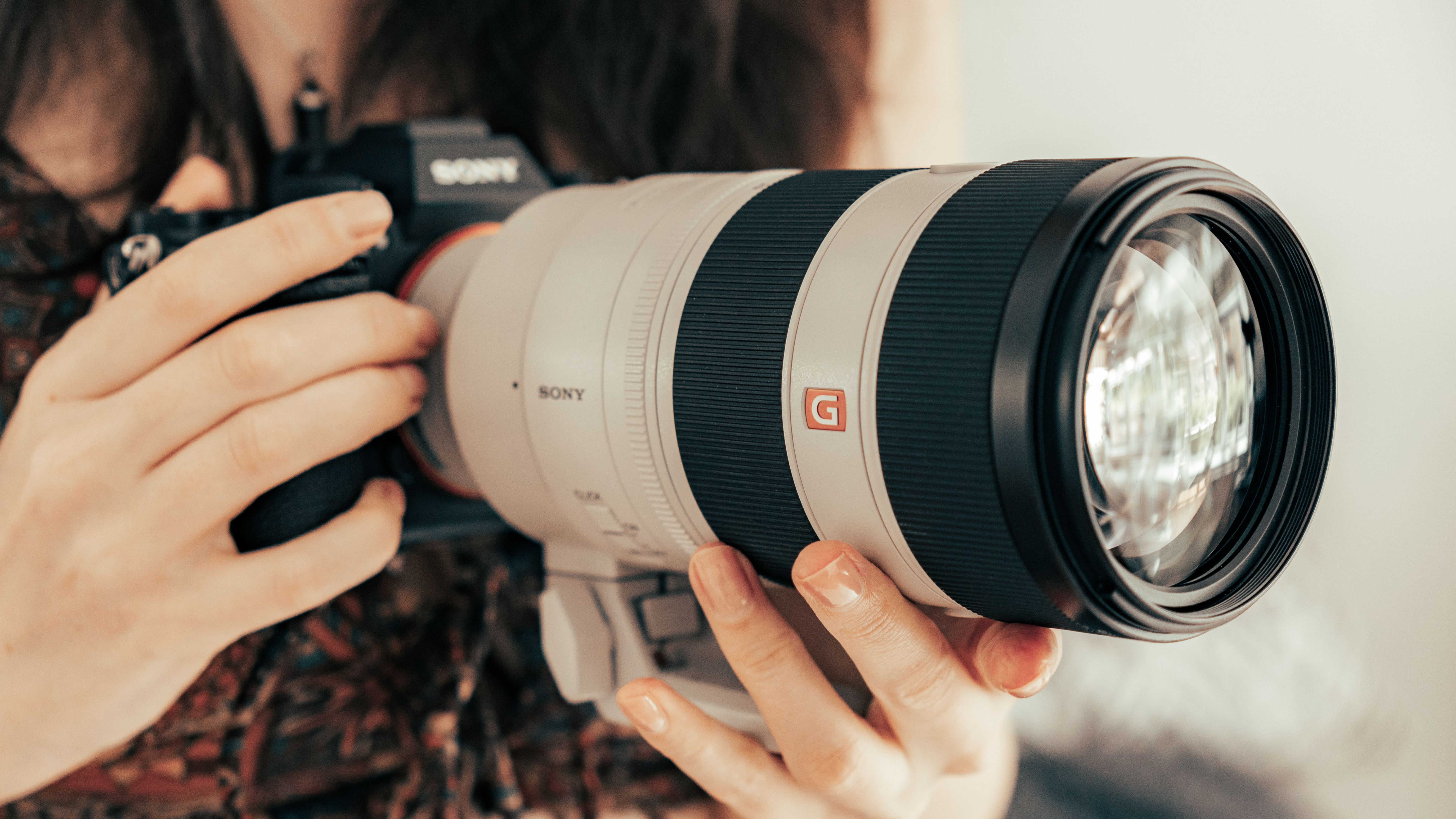
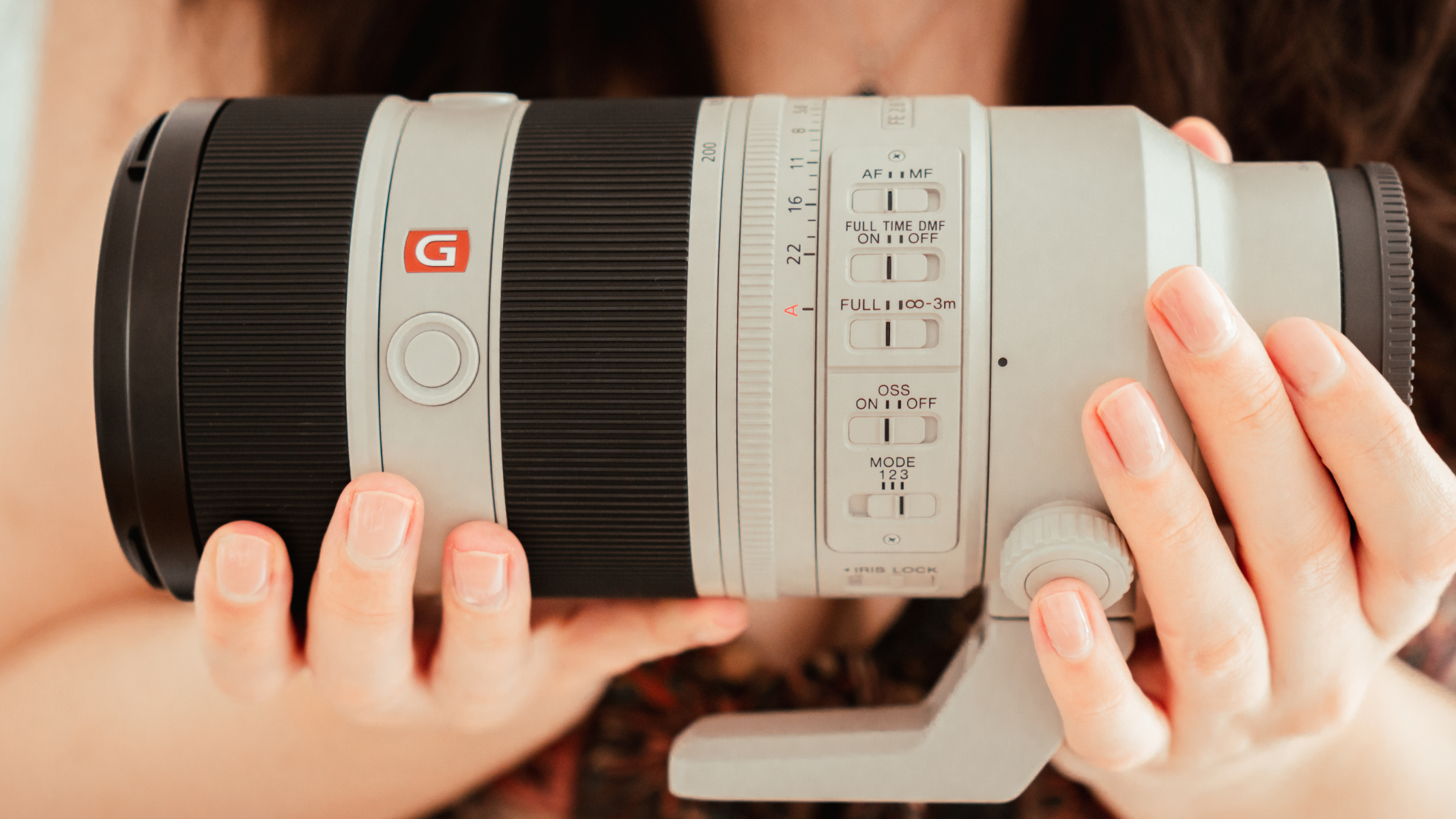
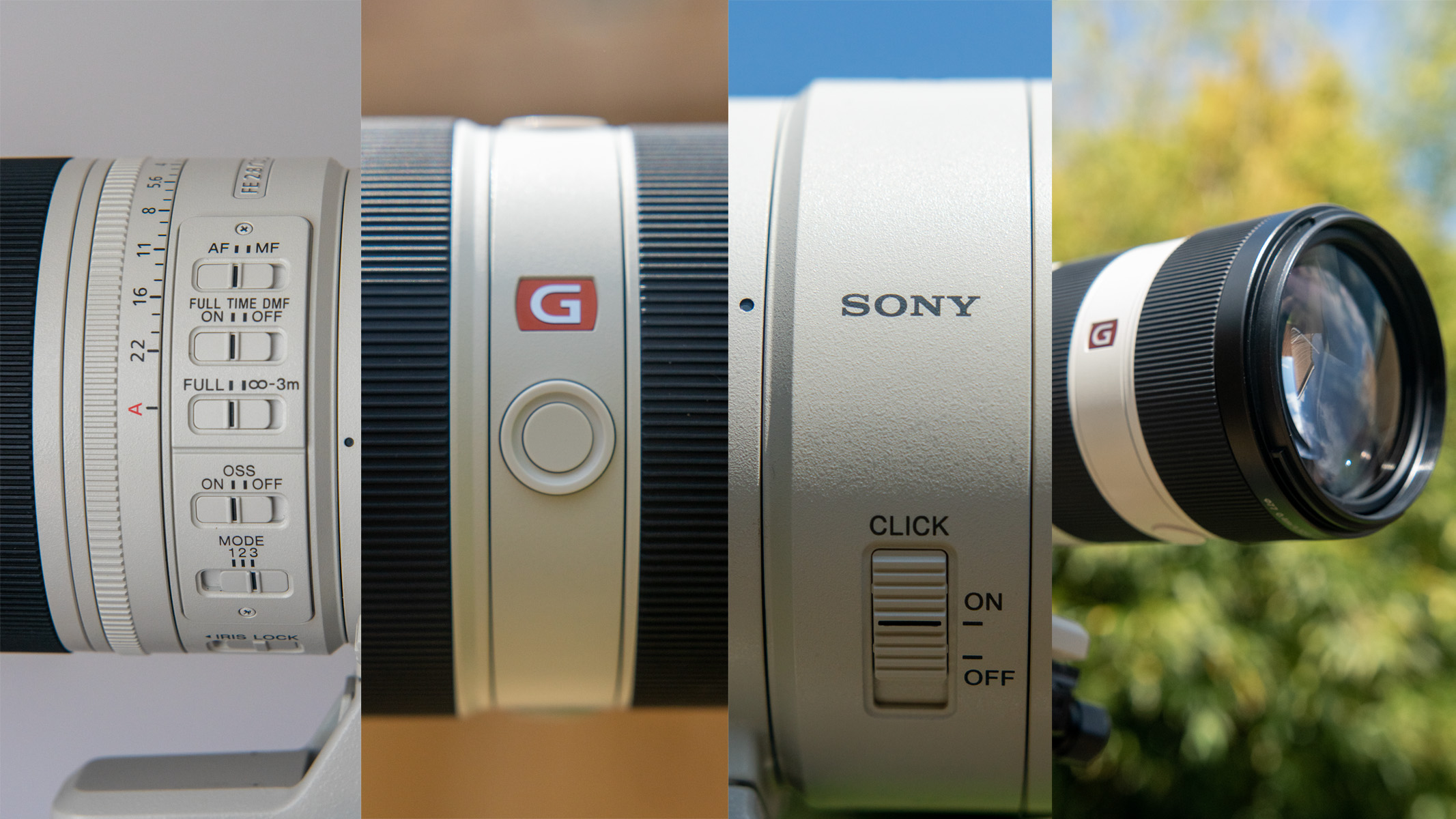
Specifications
Reasons to buy
Reasons to avoid
✅ You need a top-tier telephoto zoom for a range of different styles: If you shoot a lot of sport, wildlife or telephoto astrophotography, then this is a perfect lens as it accommodates a relatively fast aperture, strong zoom focal range and image stabilization into one lens.
✅ You prioritize professional image quality: Being part of Sony's G-master range, the lens delivers stunning sharpness and optical clarity, all while being quite light for a lens in its class.
❌ You are on a tight budget: This is one of Sony's most expensive lenses and clocks in at over $2500.
❌ You rarely shoot at telephoto lengths in low-light: If you don't frequently shoot telephoto lengths in low-light then this lens could be overkill. A slower and more affordable telephoto lens might be better for more casual use.
🔎 Sony FE 70-200mm f/2.8 GM OSS II: This lens is an absolute triumph in the field of low-light excellence across a telephoto focal range. Its unparalleled sharpness, speedy autofocus and reduced weight make it a must-have for demanding professionals who frequently shoot in a telephoto range.
The Sony FE 70-200mm f/2.8 GM OSS II represents a significant leap forward from its predecessor. The second-generation G Master lens is designed for Sony's full-frame E-mount cameras, offering a constant f/2.8 maximum aperture throughout its versatile 70-200mm focal range. For a lens of this class it is remarkably light at 2.3 pounds (1045 g) The optical design features an extreme aspherical element, two extra-low dispersion (ED), two super ED elements and an aspherical element to maintain sharpness edge to edge. It also has Sony's Nano AR coating II to minimize flare and ghosting.
In our full Sony FE 70-200mm f/2.8 GM OSS II review, we were impressed with sharpness across the entire zoom range, even while wide open at f/2.8. While not a typical astrophotography lens, we still managed to attain great results when shooting pictures of stars with this lens. The autofocus is powered by four extreme dynamic linear motors and is fast, precise and quiet, making it a great option for tracking fast-moving subjects in sports or wildlife photography. The built-in optical steadyshot (OSS) system is effective and has three different modes to switch between general use, panning use and active framing.
At over $2500, this lens is made for professionals who shoot a lot of telephoto stills in low-light. It is expensive but it does feature the best G-master optics, constant f/2.8 aperture and sharp detail across the frame. It also makes a good video lens as it has a de-clickable aperture ring and zoom smoothness switch for quiet and effortless transitions. The fluorine coating on the front element allows for easy cleaning and a moisture-resistant build ensures it has reliable operation in challenging environments.
The Sony FE 70-200mm f/2.8 GM OSS II has the standard 77mm filter thread so it will work with a wide range of existing filters. It also comes with a dedicated tripod collar for better balance when mounting, this is especially useful for those shooting deep astro. For Sony camera users who shoot a lot of professional telephoto stills, this is an essential lens that combines a fast aperture across a varied focal range with the best glass on the market.
- Read our Sony FE 70-200mm F2.8 GM OSS review
Attributes | Notes |
|---|---|
Design | Lighter than original and switch heavy. |
Performance | Sharp detail in astro and action shots. |
Functionality | Three different OSS modes and constant f/2.8 aperture. |

Harry joined Space.com in December 2024 as an e-commerce staff writer covering cameras, optics, and skywatching content. Based in the UK, Harry graduated in 2019 with a Bachelor's degree in American Literature with Creative Writing from the University of East Anglia. A keen photographer, Harry has strong experience with astrophotography and has captured celestial objects with a range of cameras. As a lifelong skywatcher, Harry remembers watching the Perseid meteor shower every summer in his hometown and being amazed by the wonders of the night sky.
Best sony lenses FAQ
What are the differences beten E lenses and FE lenses?
While technically they use the same E-mount attachment, the difference lies in the size of the sensor the lens will cover.
FE lenses are made for full-frame sensor cameras like the Sony A1 II, Sony A7R V and Sony A7 III.
E lenses are made for APS-C (cropped) sensor cameras like the ZV-E series and Alpha 6000 series.
You can use either lens on either a full-frame or APS-C sensor but there are limitations. Using an E lens on a full-frame camera will activate APS-C crop mode and reduce the resolution of the images. FE lens can be used without fault on both models but they tend to be heavier than crop lenses and will add weight to your kit.
What is the best Sony lens for astrophotography?
It depends on what kind of astrophotography you are focusing on. If your primary goal is super wide angle star fields, then the Sony FE 14mm f/1.8 GM lens as it has the best combination of a wide angle field of view and a fast aperture at f/1.8.
If you need a superfast aperture to let in more light from dimmer objects, a Sony FE 50mm f/1.4 GM lens might be more suitable. A long focal length like the one that the Sony FE 70-200mm f/2.8 GM OSS II lens offers would be good for deep sky objects like galaxies and nebulas if used with an appropriate star tracker.
What is special about the 'G-master' series?
The 'G-master' series of Sony lenses have the most advanced optical technology built into them. They feature specialised lens elements such as extreme aspherical, extra-low dispersion and super-extra-low dispersion elements. They have specially crafted aperture blades so that bokeh is creamy and smooth without aberrations.
This line of Sony lenses is really the best you can get for your camera, it combines premium optical glass, rapid linear motors and precision apertures for getting the highest quality possible from your Sony camera.
Update log
Going forward, this is where we will record any updates to this guide.
How we test the best sony lenses
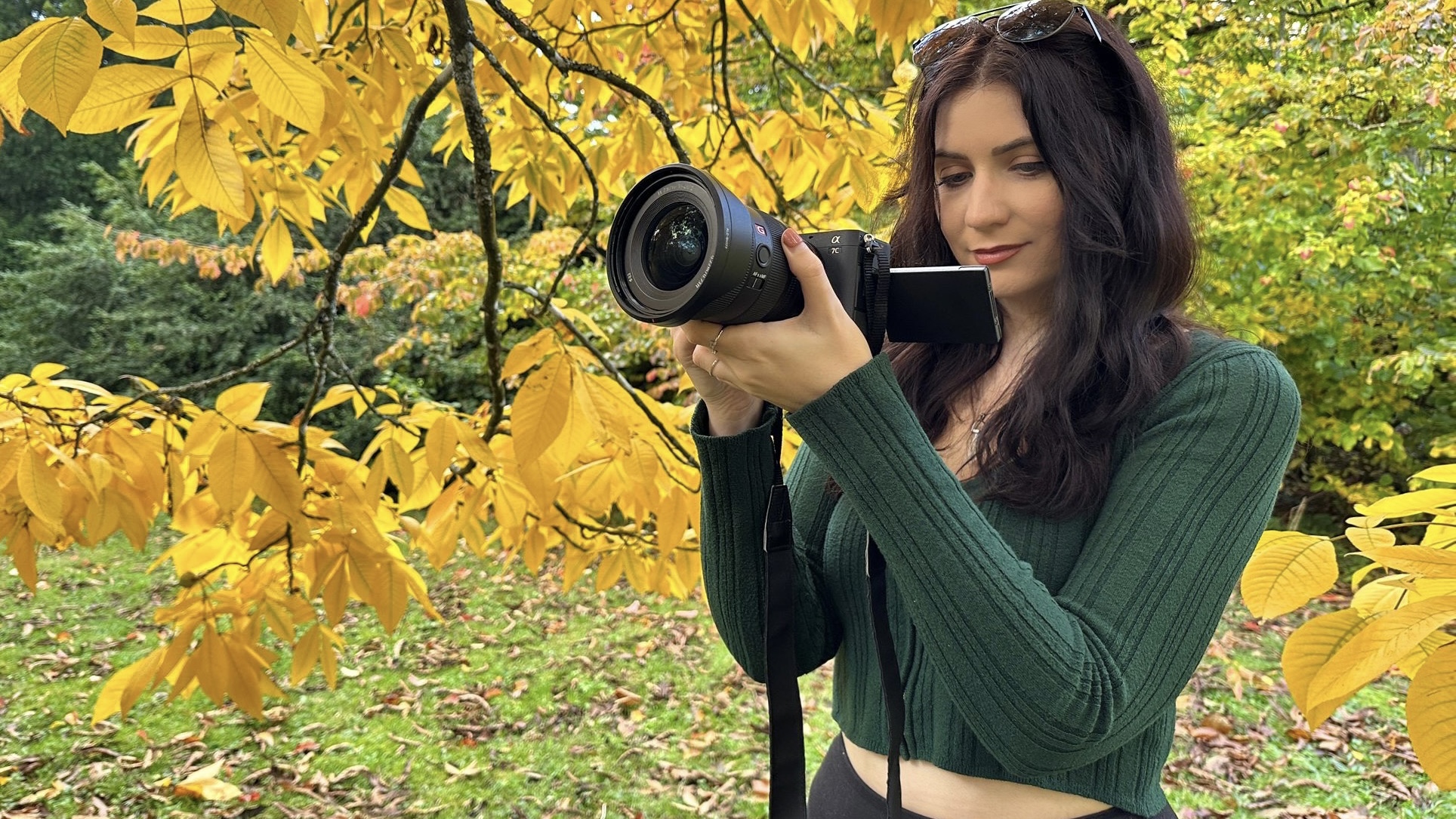
To make sure that you are getting informed reviews about Sony lenses, we try to test each lens so that we can discuss its performance in the field. We have tested every lens in this guide apart from the Sony FE 50mm f/1.2 lens but we our comments are informed by our experience with the f/1.4 model and user reviews online.
Our expert reviewers are professional photographers, so you can trust their opinions about the best Sony lenses. Our reviewers use Sony lenses with Sony camera bodies to make sure that the lens has optimized performance. When testing out a lens, we usually review it for a couple of weeks and shoot astrophotography as well as everyday shooting to get a feel for the product.
During our testing, we look at features like aperture size, focal length and optical sharpness and see how those features translate to real-world astro use. A wider maximum aperture like f/1.4 should theoretically be a good astrophotography lens because of its light-gathering ability. We check the high-quality optics offered from Sony at a premium price and double-check whether they live up to the price.
Breaking space news, the latest updates on rocket launches, skywatching events and more!

Harry joined Space.com in December 2024 as an e-commerce staff writer covering cameras, optics, and skywatching content. Based in the UK, Harry graduated in 2019 with a Bachelor's degree in American Literature with Creative Writing from the University of East Anglia. A keen photographer, Harry has strong experience with astrophotography and has captured celestial objects with a range of cameras. As a lifelong skywatcher, Harry remembers watching the Perseid meteor shower every summer in his hometown and being amazed by the wonders of the night sky.
- Chris McMullenContributing Writer
